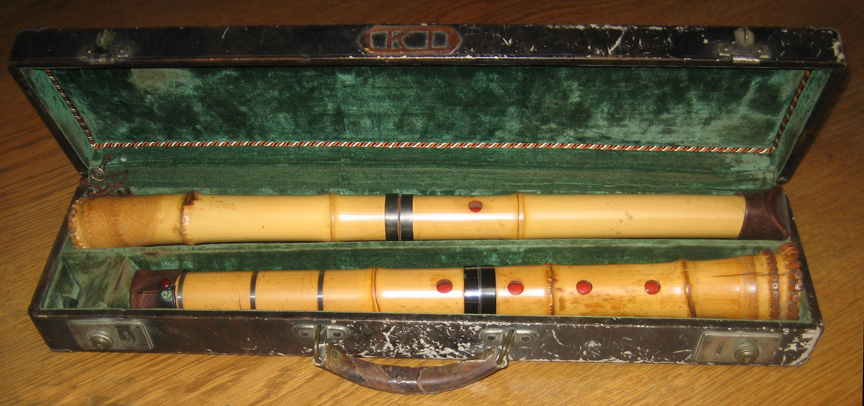|
VINTAGE SHAKUHACHI Repair & Restoration • Performance Upgrade |
Photo Gallery - Page 28 |
|
VINTAGE SHAKUHACHI Repair & Restoration • Performance Upgrade |
Photo Gallery - Page 28 |
Restoration and performance upgrade of a vintage 1.6' Seika made by Seikado / Kitahara Kozan I
|
 |
"My dad was born in 1906 in Japan, and came to California when he was 16 years old to join his father and two older brothers working to earn money to take back to Japan. He did not return to Japan when his father went back. In his young adult bachelor years in Los Angeles, my father studied and played the shakuhachi. After the start of WWII, the family (two children, including me) was relocated by the US government to an internment camp in Roher, Arkansas. Upon release after the war, the family returned to the central valley of California. In my elementary school years, I remember his playing the shakuhachi. From this I assume he was either allowed to take the shakuhachi with him to Arkansas, or they were kept in safekeeping and returned to him after the war by his client friends in Los Angeles. I am thus assuming these shakuhachi were purchased by him between the years 1926 and 1934." - Jim H. Ishimaru |
Kozan Kitahara I KBorn in Takamatsu, Kagawa Prefecture on August 25, 1883. The Seikado shakuhachi workshop was established in 1908 in Osaka to fill the need for modern shakuhachi suitable as a musical instrument. In 1945, after WWII, Kitahara moved Seikado to Kyoto. Currently, his third son, grandson and great grandson are making shakuhachi.
Kozan Kitahara II KBorn in 1925, was a well-known shakuhachi player in Tokyo for many years. He is a founding member of the Yonin no Kai Ensemble which was established in 1957 and recorded over 25 albums of traditional and contemporary Japanese music. |
This 1.6' Seikado rokusun arrived with severe cracks in the bamboo that were inadequately protected with filament bindings, a compromised nakasuké joint whose water buffalo horn rings suffered from insect damage, as well as broken and peeling lacquer inside the precision bore.
The completely restored 1.6' Seikado / Kozan Kitahara I included a performance upgrade, repaired and relacquered bore, rebuilt nakasuké joint and rings, and inlaid rattan binding to protect the bamboo from further deterioration.
|